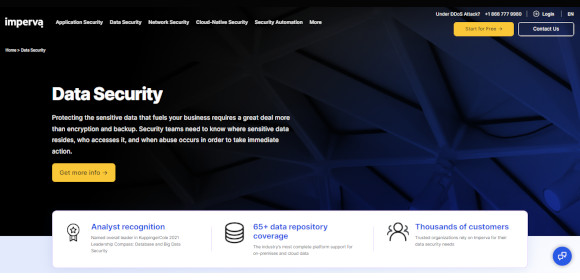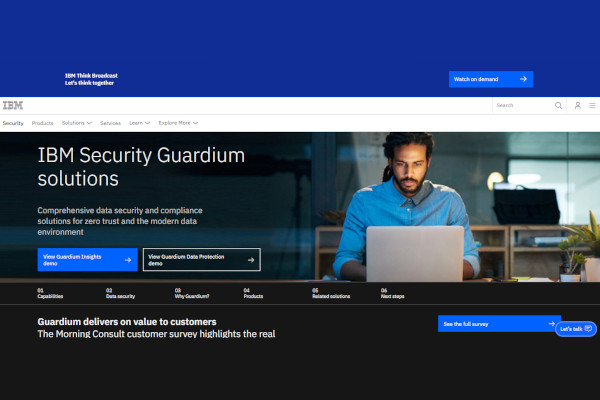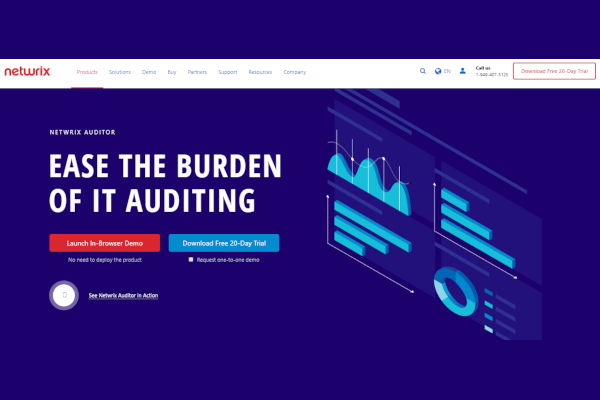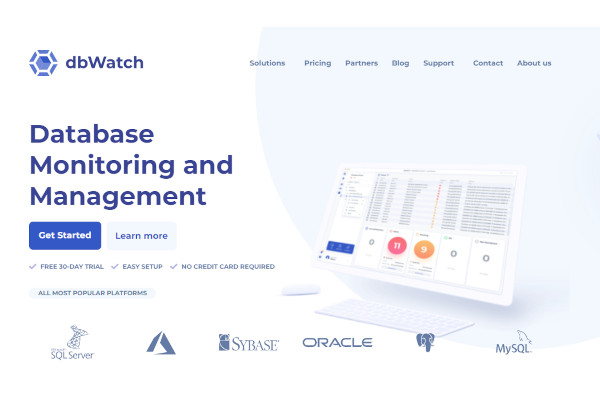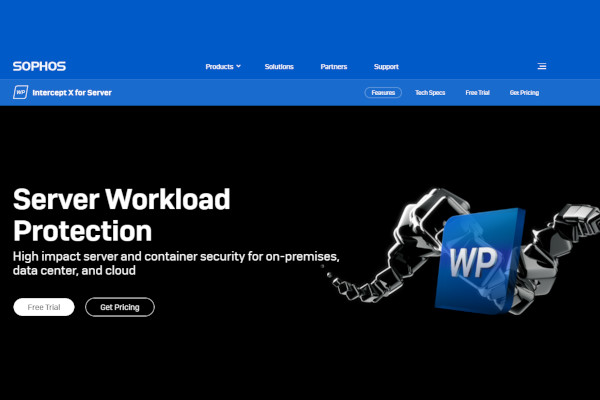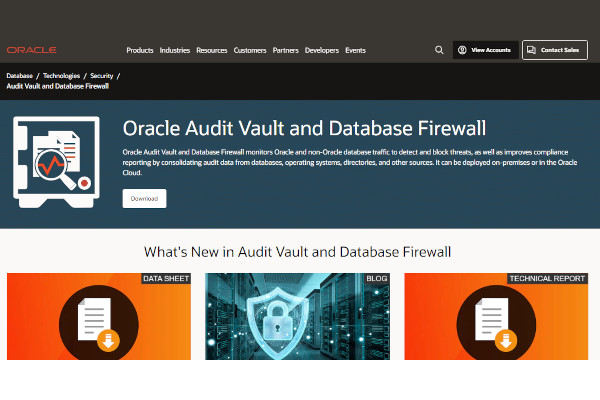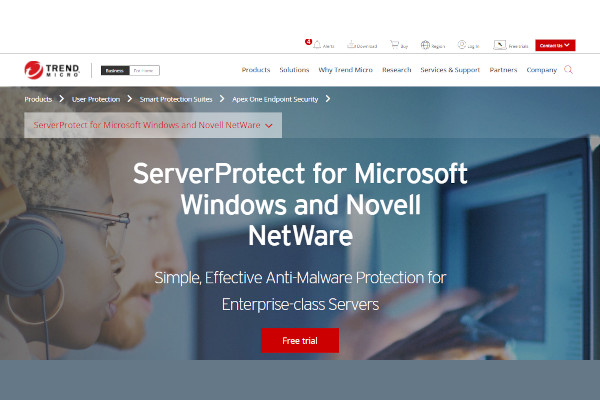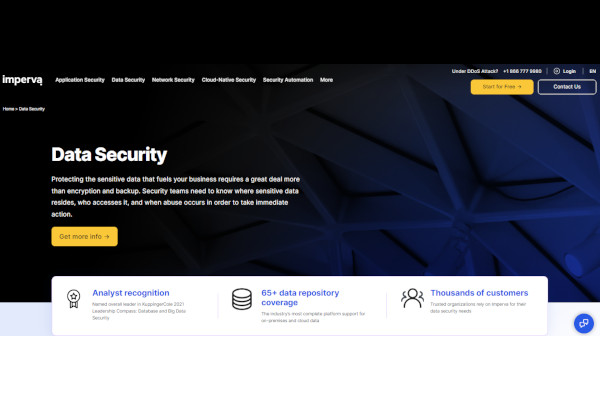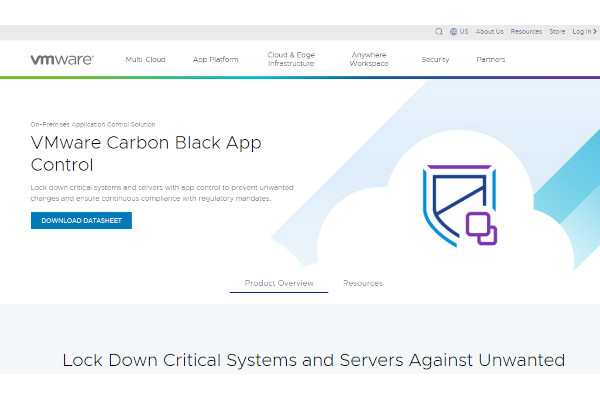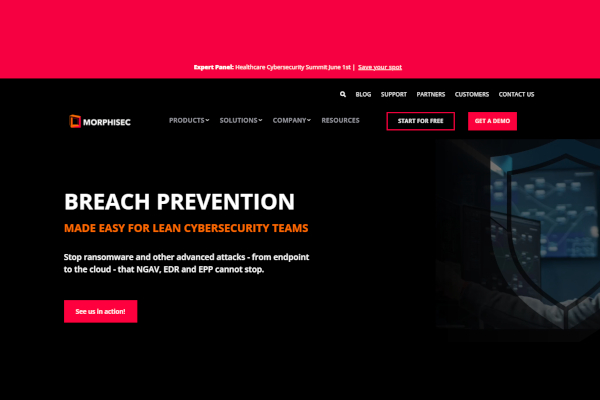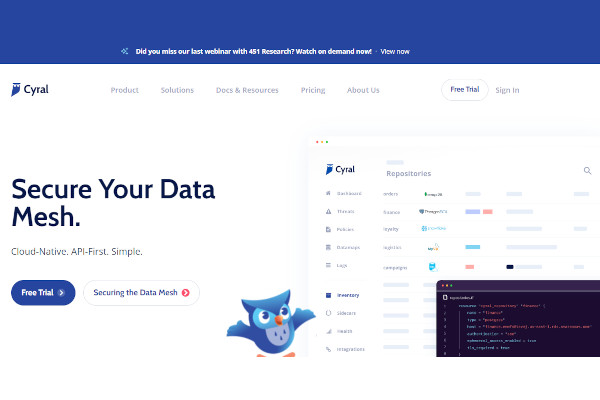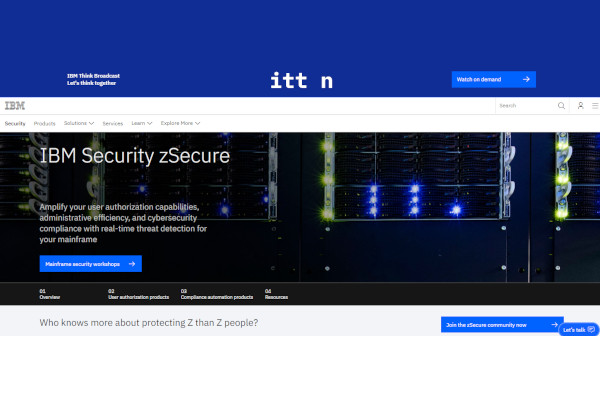Data security is the body of rules and guidelines we use to protect digital information throughout its lifespan against unauthorized access, modification, and disclosure. Data security includes all organizational practices, rules, guidelines, and technology that protect information against hacker assaults, malicious intrusions, and inadvertent data leaks.
10+ Best Database Security Tools Software
1. IBM Security Guardium
2. Netwrix Auditor
3. dbWatch
4. Sophos Intercept X for Server
5. Oracle Audit Vault and Database Firewall
6. Trend Micro ServerProtect
7. Imperva Data Security
8. Carbon Black App Control
9. Morphisec
10. Cyral
11. IBM Security zSecure
What Is a Database Security Software?
To guarantee that the data stored in a database is safe and secure, businesses use database security technologies. To track activities and ensure that only those with the proper authorization may access sensitive data, several solutions offer database activity monitoring tools. Other elements that are often used include database assessment and security database testing. These assist in managing security needs and simulating possible threats. Network encryption is the last feature these gadgets have in common. To prevent leaks or hacks, they will render information inaccessible. Databases may be protected using these technologies whether they are on-premise, in the cloud, or in a hybrid environment, however, the capabilities vary depending on the solution.
Benefits
Database security helps firms to withstand attacks such as ransomware and hacked firewall software, therefore protecting vital data from being compromised. In addition to this, it helps prevent infections caused by malicious software or viruses from corrupting data, taking down a network, and spreading to all endpoint devices.
Features
Adapting your facilities to the rapidly evolving technological requirements might put you at risk for data breaches and result in downtime. For firms looking to manage facility data across several locations, facility management software that improves data visibility and simplifies current processes without increasing the risk of sensitive data loss is the ideal solution. Here are five fundamental software functions that may support you in doing that:
- Email encryption
- Processes for disaster recovery
- Enables executives and facility management to access their systems conveniently from anywhere
- Keeping your system and data safe by limiting downtime
Top Database Security Tools Software
1. MSSQL DataMask
Using real data in test databases is a mistake that every business does. For projects requiring SQL Server databases that include development, testing, or IT outsourcing, MSSQL Data Disguise gives developers the option to mask data. Tools for data masking are categorized in MSSQL Data Mask, which is used to safeguard the information that is identified as sensitive personal information, personally identifiable information, or information that is commercially sensitive.
2. Scuba
More than 2,000 typical issues, including weak passwords, known configuration hazards, and missing updates, may be analyzed using the free Scuba software tool from vendor Imperva, which is designed to improve database security. Businesses all across the world utilize Scuba as a database patch-up booster.
3. AppDetectivePro
A database and big data store scanner called AppDetectivePRO can instantly identify configuration errors, identification and access control problems, missing patches, or any toxic combination of settings that might result in intensification or denial-of-service attacks, data leakage, or unpermitted modification of data.
4. Nmap
Nmap (“Network Mapper”) is a free and open-source tool for network discovery and security audits. It is helpful for duties like managing service update schedules, network inventory, and host or service uptime, according to several systems and network managers. To identify which hosts are present on the network, which services (application name and version) those hosts are offering, which operating systems (and OS versions) they are running, what kinds of packet filters/firewalls are in use, and lots of other features, Nmap employs novel techniques that use raw IP packets.
5. Zenmap
The official Nmap Security Scanner GUI is called Zenmap. It is a multi-platform, free and open-source tool that supports Linux, Windows, Mac OS X, BSD, etc. It attempts to make Nmap simple to use for newcomers while offering extensive functionality for Nmap veterans. You may use it to store frequently used scans as a profile so you can easily run them again and again. It includes a lot of crucial features including database instances and vulnerability detection and scanning.
6. BSQL Hacker
The BSQL Hacker is a SQL Injection Tester that tackles errors-based, deep blind, time-based, and blind SQL injection assaults. In addition to handling Oracle and MySQL databases, the program is built to automatically extract database data and schemas.
7. SQLRECON
A database discovery tool called SQLRECON explores a network both actively and passively to find SQL Server instances. The number of personal firewalls, uneven network library setups, and support for numerous instances make it more difficult to locate, evaluate, and manage SQL Server installations. By merging all known methods of SQL Server/MSDE discovery into a single tool, SQLRecon is created to address this issue. It may be used to find servers that you were unaware were on your network so that you can appropriately protect them.
8. Oracle auditing tools
A toolset called the Oracle Auditing Tools may be used to check the security of Oracle database servers. To assess the security of Oracle database setups, this open-source toolkit contains password-attack tools, command-line query tools, and TNS-listener query tools. In addition, both Windows and Linux versions of the programs were examined.
9. OScanner
A Java-based Oracle evaluation framework called OScanner was created. It comes with a few plugins that can presently accomplish the following and has a plugin-based design. Enumerate, Oracle version, Sid Enumeration, Passwords tests (common & dictionary), Enumerate, Account roles, Enumerate, Account privileges, Enumerate, Account hashes, and many more.
10. DB Defence
DbDefence is a simple, inexpensive, and efficient security solution for MS SQL Server that encrypts whole databases and safeguards their schema. It enables developers and database managers to fully encrypt databases. The database is shielded against illegal access, alteration, and dissemination by Db Defence. It provides a broad and robust selection of database security capabilities, including powerful encryption and SQL protection from SQL Profiler.
FAQs
How do you describe database security?
When we talk about “database security,” we’re referring to a collection of technologies, rules, and procedures that are used to ensure and preserve the availability, integrity, and confidentiality of databases. This post will focus on confidentiality since it is the aspect of data security that is compromised in the vast majority of data breaches.
What makes database security important?
Database systems may be vulnerable to a variety of security risks, including the corruption and loss of data brought on by the insertion of incorrect data or instructions, errors in database or system management activities, sabotage or other forms of criminal harm, and so on.
What is a database?
The storage and organization of information on a certain subject may be facilitated via the use of a database. In addition to retaining the data, you have the option of sorting it, extracting relevant information, and summarizing it.
Keeping data safe requires a database administrator to be aware of the most common threats, at which point they may implement any number of data security measures and use only the safest servers possible. When a data recovery and backup system has these top qualities, it will guarantee that the data can be protected against ransomware assaults.
Related Posts
10+ Best Chemical Software for Windows, Mac, Android 2022
12+ Best Vulnerability Scanner Software for Windows, Mac, Android 2022
4+ Best Bundled Pay Management Software for Windows, Mac, Android 2022
10+ Best Trust Accounting Software for Windows, Mac, Android 2022
10+ Best Patient Portal Software for Windows, Mac, Android 2022
13+ Best Virtual Reality (VR) Software for Windows, Mac, Android 2022
12+ Best Bed and Breakfast Software for Windows, Mac, Android 2022
15+ Best Resort Management Software for Windows, Mac, Android 2022
14+ Best Hotel Channel Management Software for Windows, Mac, Android 2022
12+ Best Social Media Monitoring Software for Windows, Mac, Android 2022
10+ Best Transport Management Software for Windows, Mac, Android 2022
10+ Best Other Marketing Software for Windows, Mac, Android 2022
10+ Best Top Sales Enablement Software for Windows, Mac, Android 2022
8+ Best Industry Business Intelligence Software for Windows, Mac, Android 2022
10+ Best Insurance Agency Software for Windows, Mac, Android 2022
